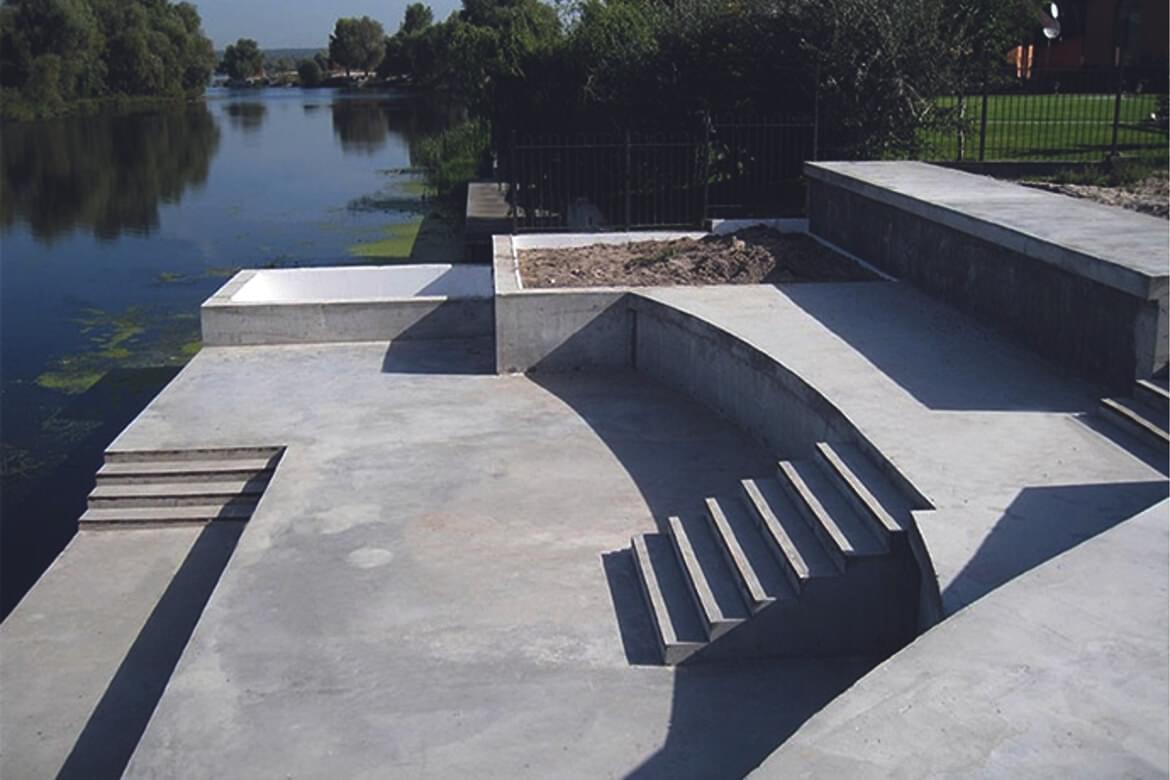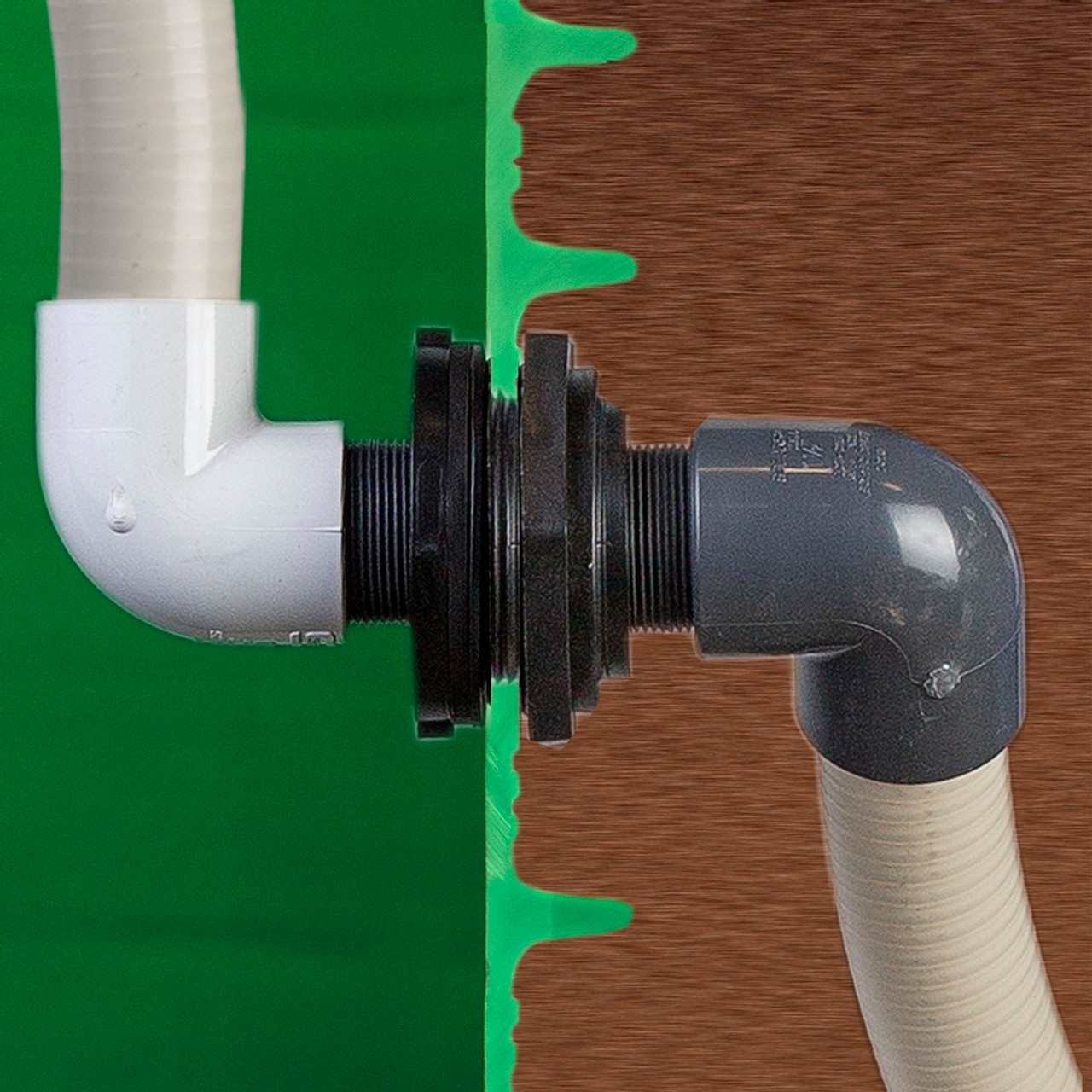The Role of Bulkhead in Enhancing Waterside Appearances and Capability
Bulkheads offer a vital feature in waterside areas, balancing aesthetics with practical advantages. They maintain shorelines, minimizing disintegration while improving the aesthetic landscape. With cautious style, these structures can change barren areas right into lively community centers. The styles and products chosen can substantially affect the ambience of the waterfront. This intersection of utility and appeal elevates crucial inquiries about future design options and their effects for city environments. What technologies might redefine bulkhead performance?
Importance of Bulkheads in Shoreline Protection
Bulkheads play an important duty in shoreline security by working as barriers against erosion and tornado surges. These structures, typically made from steel, timber, or concrete, are strategically mounted along shores and shorelines to support the land - Bulkhead on Lake Livingston. By dispersing and taking in wave energy, bulkheads stop soil displacement and safeguard important home and facilities from damage triggered by severe weather problems. Additionally, they help preserve water quality by lowering runoff and sedimentation, which can negatively affect marine ecological communities
Along with their protective functions, bulkheads can facilitate recreational activities such as angling and boating by supplying steady accessibility points along the shoreline. Their installment often contributes to enhanced safety and availability for both residents and site visitors. Inevitably, bulkheads offer an essential objective in protecting shorelines, making certain that environmental balance is kept while protecting human interests versus the forces of nature.

Aesthetic Payments of Bulkheads
Bulkheads can substantially improve the aesthetic charm of beachfronts with thoughtful layout options. By picking suitable colors and products, these structures can integrate with their environments, adding to a total aesthetic experience. This assimilation not only boosts the charm of the shoreline however also reflects the character of the regional environment.
Visual Appeal Improvement
While typically overlooked, the aesthetic payments of bulkheads play a significant function in boosting the visual allure of watersides. These frameworks offer a clear delineation in between land and water, creating a sense of order and organization that is aesthetically pleasing. By integrating practical layout with sculptural aspects, bulkheads can integrate with the natural environments, contributing to the total landscape. In addition, they can be designed to match existing architectural functions or boost the beachfront's character, making it extra welcoming. The visibility of bulkheads can likewise motivate the unification of landscaping components, such as yards or seating areas, further enhancing the aesthetic experience. Inevitably, well-designed bulkheads serve to raise the beauty and beauty of beachfront spaces, making them much more eye-catching to visitors and homeowners alike.
Color and Material Choices
The choice of shade and materials for bulkheads considerably influences their visual influence on watersides. Different products, such as wood, concrete, and metal, deal distinctive appearances and structures, allowing designers to develop aesthetically attractive frameworks that match their surroundings. As an example, all-natural wood can stimulate a rustic charm, while sleek steel coatings may share a modern-day aesthetic.
Shade choices additionally play an essential duty; lively shades can energize an area, while muted tones cultivate a peaceful ambience. The right mix of products and colors can boost the general visual experience, developing a natural look that accentuates the beachfront. Eventually, thoughtful material and shade choice contributes to the bulkhead's functionality while improving the beachfront's aesthetic allure.

Integration With Environments
An attentively developed bulkhead not only serves its useful function but additionally plays a considerable role in boosting the visual consistency of waterside environments - Bulkhead on Lake Livingston. By incorporating perfectly with the bordering landscape, bulkheads can enhance natural features such as coastlines, parks, and seaside vegetation. Their layout can reflect local architectural styles, ensuring that they blend into the area's aesthetic textile. Additionally, making use of lasting products and indigenous plants around bulkheads can promote ecological equilibrium while enhancing visual allure. By prioritizing assimilation with surroundings, bulkheads add to a cohesive waterside experience that invites both regional residents and visitors. This interest to visual detail promotes a local color, improving the total character of the beachfront
Recreational Opportunities Created by Bulkheads
Bulkheads play a crucial duty in enhancing leisure possibilities along waterfronts. They offer enhanced accessibility for fishing, making it possible for anglers to reach deeper waters easily. In addition, these frameworks promote different water sports, using secure launch factors and locations for tasks such as kayaking and paddleboarding.

Fishing Gain Access To Improvements
While enhancing waterfront appearances, fishing accessibility improvements likewise produce beneficial leisure opportunities for local neighborhoods. Bulkheads can be created with incorporated angling systems, offering anglers safe and hassle-free access to water bodies. These structures not only assist in angling yet additionally work as monitoring factors for wild animals, permitting visitors and residents to engage with nature. Improved accessibility can lead to increased participation in fishing activities, fostering a sense of community and advertising outside leisure. Furthermore, well-kept fishing areas can bring in tourist, profiting local economic climates. By supplying designated angling areas, bulkheads contribute to lasting fishing practices, making sure that regional ecosystems continue to be healthy and balanced while improving the total experience for recreational fishers. Ultimately, these improvements enhance waterfront areas for all individuals.
Water Sports Assistance
As waterside areas progress, the combination of bulkheads plays an essential role in facilitating water sporting activities and increasing entertainment possibilities for neighborhoods. These structures give steady access factors for different activities, consisting of paddleboarding, kayaking, and jet skiing. By developing assigned areas for introducing and docking, bulkheads enhance safety and security and ease of access for fanatics of every ages. Furthermore, they help to specify recreational areas, dividing them from fishing areas and boating channels, consequently lowering congestion and prospective hazards. The existence of bulkheads additionally adds to boosted water conditions, as they can assist mitigate wave activity and erosion, developing a more positive setting for water sports. Inevitably, bulkheads foster a lively beachfront culture that encourages active way of livings and community interaction.
Ecological Benefits of Bulkheads
Though commonly viewed mainly as architectural components, bulkheads supply substantial ecological benefits that improve seaside ecosystems. By avoiding disintegration, bulkheads support shorelines, which helps maintain marine habitats and safeguards essential greenery. This stabilization motivates the development of all-natural barrier zones, enabling native plant types to grow while advertising biodiversity.
Additionally, bulkheads can assist filter pollutants from stormwater runoff, boosting water top quality in nearby water environments. By acting as obstacles, they likewise reduce sedimentation in waterways, preserving the health and wellness of fish populations and various other marine life. Furthermore, bulkheads can act as substratum for marine microorganisms, fostering environments for oysters, barnacles, and other varieties that add to environmental balance.
Neighborhood Engagement and Bulkhead Style
Efficient community engagement plays a necessary role in the layout of bulkheads, guaranteeing that neighborhood voices and perspectives shape the development procedure. Via participatory planning, stakeholders-- consisting of homeowners, local business owner, and ecological groups-- can add their insights and choices. This collective approach not only cultivates a sense of possession and pride among area members but also improves the bulkhead's capability and visual appeal.
Public surveys, workshops, and discussion forums provide systems for discussion, enabling for have a peek at these guys the recognition of particular neighborhood demands and issues. By integrating responses, designers can create bulkheads that show the one-of-a-kind personality of the waterfront and address neighborhood ecological issues. Additionally, involving the community in the design process can result in ingenious options that promote sustainability and durability. Eventually, efficient interaction assurances that bulkhead jobs are not just aesthetically pleasing yet likewise serve the useful requirements of the neighborhood, improving overall waterfront experiences.
Future Trends in Bulkhead Development
The integration of area input in bulkhead layout not just improves regional relevance but also establishes the phase for future technologies in bulkhead growth. Emerging trends indicate a shift towards eco lasting products, prioritizing making use of biodegradable and recycled parts. This strategy not only addresses ecological concerns yet likewise lines up with area values focused on sustainability.
Innovations in modern technology are leading the way for clever bulkhead systems furnished with sensors find out this here that keep an eye on structural stability and water degrees, supplying real-time information for maintenance and safety and security.
In addition, aesthetic factors to consider are progressing, with an expanding emphasis on including green rooms and recreational locations into bulkhead styles, boosting the total waterfront experience.
As city areas grapple with environment change, durable bulkhead designs that can hold up against extreme climate events are prepared for. These trends symbolize a move towards multifunctional, sustainable, and community-oriented bulkhead advancements that reflect the values and needs of modern society.
Regularly Asked Questions
What Materials Are Generally Used to Build Bulkheads?
Typical products made use of to construct bulkheads include wood, vinyl, concrete, and steel. Each product offers distinct benefits, such as sturdiness, resistance to deterioration, and ecological impact, influencing their selection based upon details website problems and needs.
How Typically Do Bulkheads Need Maintenance or Fixes?
Bulkheads usually require maintenance or repair work every 5 to 10 years, depending upon environmental conditions, products used, and exposure to water. Regular assessments can assist recognize concerns early, preventing costly repair services and making certain long life.
Can Bulkheads Affect Resident Wild Animals Habitats Negatively?
Yes, bulkheads can negatively influence neighborhood wild animals habitats by disrupting natural coastlines, restricting access to tidal areas, and modifying water circulation, which may hinder the development of crucial plant life and affect neighborhood marine varieties' survival.
Are There Regulations Governing Bulkhead Construction and Placement?
Yes, regulations governing bulkhead building and construction and positioning commonly exist at regional, state, and government levels. These laws intend to ensure environmental management, advertise sustainable methods, and reduce adverse effect on surrounding neighborhoods and ecosystems.
What Is the Typical Lifespan of a Bulkhead?
The average lifespan of a bulkhead normally ranges from 25 to 50 years, depending see it here upon materials used, environmental problems, and upkeep techniques. Prompt repair work and routine inspections can greatly expand this life-span.
Bulkheads can significantly improve the visual allure of waterfronts through thoughtful layout choices. While usually neglected, the visual payments of bulkheads play a significant function in improving the aesthetic appeal of beachfronts. A thoughtfully developed bulkhead not just serves its functional purpose however additionally plays a significant function in enhancing the visual consistency of beachfront environments. Bulkheads play an essential role in enhancing leisure chances along watersides. The assimilation of area input in bulkhead layout not just boosts local importance but also sets the stage for future innovations in bulkhead development.